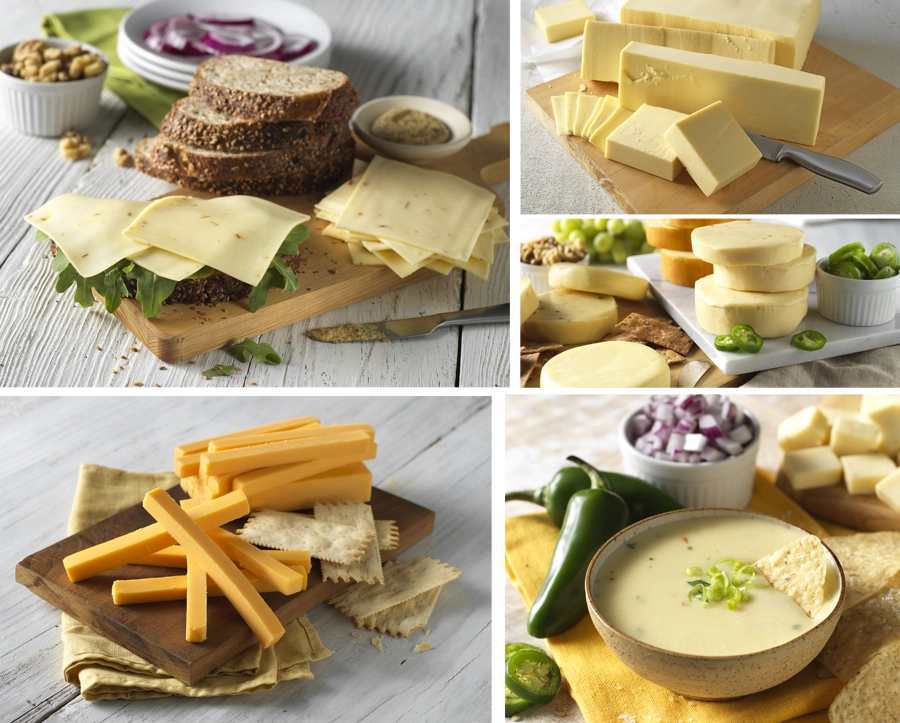A Comprehensive Consider Cheese Manufacturing: Active Ingredients, Approaches, and the Future of Craftsmen Cheeses
The intricate process of cheese production is an interesting merging of art and science, where high-quality milk, rennet, and details bacterial societies offer as foundational elements. As the sector progressively prioritizes sustainability and openness, the future of artisan cheeses assures to reflect both heritage and progression.
Secret Ingredients in Cheese Production
A variety of vital components play a pivotal role in cheese manufacturing, each adding to the last product's flavor, texture, and character. The main active ingredient in cheese is milk, which can originate from different resources, including cows, goats, and lamb - cheese factory melbourne. The kind of milk used dramatically affects the cheese's preference and consistency; as an example, cow's milk generally produces creamier cheeses, while goat's milk commonly produces tasty selections
An additional critical component is rennet, an enzyme used to curdle the milk, dividing it into curds and whey. The resource of rennet can be animal, veggie, or microbial, each presenting distinct qualities to the cheese.
Salt not just enhances the flavor yet also acts as a chemical, hindering the development of unwanted bacteria. In addition, various flavor representatives, such as natural herbs, seasonings, or perhaps smoked wood, can be added to create unique artisanal cheeses. Together, these active ingredients form the structure of cheese production, establishing the stage for diverse and rich cheese ranges.
Conventional Cheese-Making Strategies
Making use of traditional cheese-making strategies, craftsmens around the globe maintain classic approaches that have actually been passed down via generations. These strategies commonly stress making use of top quality, in your area sourced milk, which is main to the unique flavors and structures of artisanal cheeses. The process generally begins with the mindful home heating of milk, followed by the enhancement of societies and rennet to promote coagulation.
When the curds form, they are reduced, enabling whey to drain, an important step that influences moisture material and texture. Salting is a necessary element of this process, enhancing taste while likewise acting as a preservative.
Aging, or affinage, is one more essential component, during which cheeses develop their particular scents and tastes. Craftsmens might employ details maturing settings, using humidity and temperature controls to refine celebrity's profile. The dedication to these standard methods not only sustains local economic climates however also adds to the abundant variety of cheese selections found around the world, commemorating cultural heritage and artisanal craftsmanship.
Modern Developments in Cheese Production
Just how have technological advancements changed cheese manufacturing in current years? The integration of contemporary technology has actually transformed both the performance and quality of cheese manufacturing. Automation in various phases of the procedure-- from curd formation to product packaging-- has actually enhanced consistency while reducing labor expenses. Automated curd cutting and stirring systems enable for exact control over structure and moisture degrees, crucial factors affecting the last product.
Additionally, developments in microbiology have actually allowed cheesemakers to choose particular bacterial societies and enzymes, maximizing taste accounts and improving rack life. The use of sensor technology for keeping an eye on fermentation conditions has actually likewise become widespread, permitting for real-time changes to keep ideal settings for cheese aging.
These developments not only improve the top quality and sustainability of cheese manufacturing but also encourage craftsmen producers to maintain typical tastes while accepting modern-day effectiveness. As modern technology proceeds to evolve, the future of cheese production looks encouraging, blending practice with advancement.
The Role of Terroir in Cheese
In the world of cheese manufacturing, terroir plays a critical duty in defining the distinct features of various cheeses. Terroir, a French term generally related to wine, includes the ecological variables that influence agricultural items, consisting of dirt make-up, climate, and neighborhood plants and fauna. In cheese-making, the distinct features of the region where the milk is sourced can convey certain tastes and structures to the last item.
As an example, the grazing conditions of dairy products pets considerably affect the milk's composition, affected by the kinds of lawns and herbs offered in a certain place. This varies not just between countries however additionally in between regions within the very same these details nation. In addition, the microbial areas existing in the atmosphere add to the fermentation processes, bring about diverse accounts in flavor and scent.
Cheeses such as Roquefort, Parmigiano-Reggiano, and Cheddar exhibit just how terroir can shape their identities, making them distinctive and usually safeguarded by geographical indications. As producers increasingly acknowledge the relevance of terroir, there is an expanding focus on sourcing regional components and preserving standard techniques, making sure that each cheese truly mirrors its beginning.

Future Trends in Artisan Cheeses
A noteworthy shift is happening in the artisan cheese market, driven by advancing customer preferences and technical developments. Progressively, customers are moving toward distinct, high-quality products that highlight both sustainability and regional sourcing - cheese factory melbourne. This pattern is motivating artisan cheesemakers to innovate, focusing on small-batch production and using conventional strategies while incorporating modern-day innovation to boost top quality and safety
Moreover, there is an expanding interest in plant-based and different milk items, pushing conventional cheesemakers to explore new opportunities, such as cashew or this contact form almond-based cheeses. This change not only accommodates dietary limitations but also straightens with ecological issues pertaining to animal farming.
Furthermore, transparency in sourcing and manufacturing processes is ending up being critical. Consumers are much more informed and demand traceability, triggering producers to take on more clear labeling methods and involve in storytelling that highlights their techniques and values.
Verdict
To conclude, the intricate process of cheese production fuses conventional techniques with modern technologies, leading to a varied variety of tastes and textures. The emphasis on high-quality components and the influence of terroir underscore the artistry included in cheese production. As the sector develops, a concentrate on sustainability and transparency will likely shape the future of artisan cheeses, accommodating Discover More a significantly critical consumer base that values authenticity and craftsmanship in dairy products.